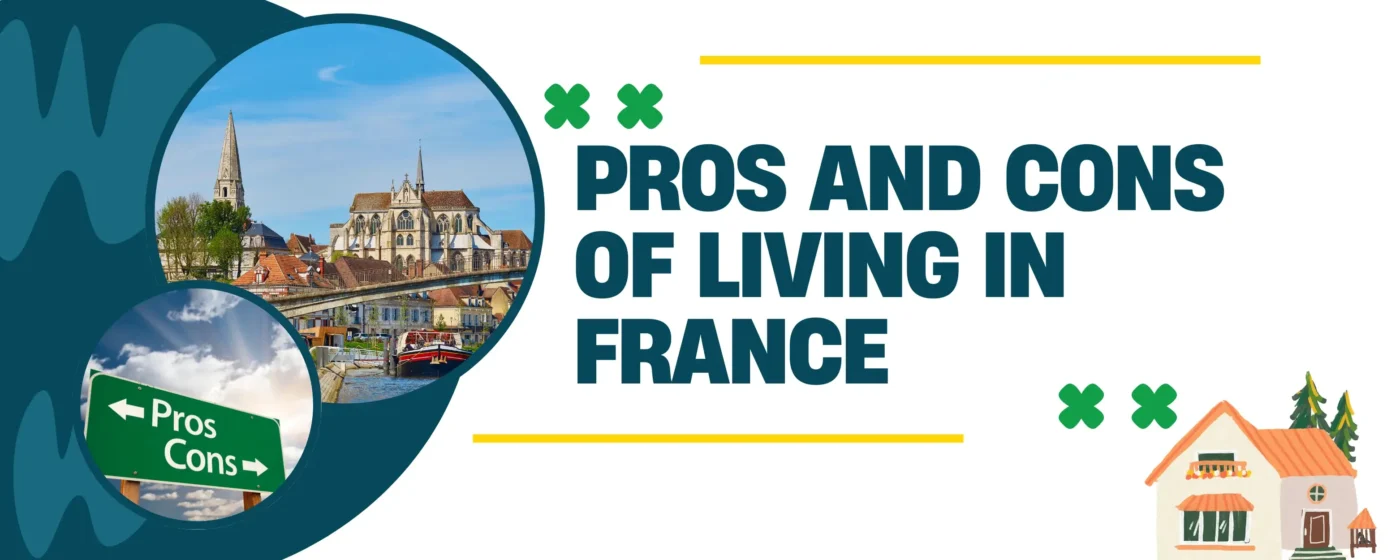Have you ever felt a shiver down your spine while exploring an old, forgotten (maybe stereotypically haunted) corner of a city? Well, that’s the feeling French ghost stories evoke. They’re not just scary! These tales, passed down through generations, will make you question what truly lies beyond the veil of our everyday mundane world. Allez-y!
The Phantom of the Opera (Le Fantôme de l’Opéra) by Gaston Leroux
Overview
The Phantom of the Opera isn’t just a ghost story. It’s a heartbreaking tale of a soul trapped in the shadows. Begin to imagine a brilliant musician, hidden away from the world by a grotesque disfigurement, finding solace in the enchanting voice of a young soprano. Sounds like an interesting character right? Well, that’s Erik, the “Phantom”, a creature of the Paris Opera House, where his obsession with Christine Daaé blossoms into a dangerous, all-consuming love!
Themes
- Unrequited Love: Erik’s love for Christine is a tragic reminder that “mind over matter” is not always the case. He yearns for someone to see beyond his monstrous appearance and appreciate his soul. But his love remains unrequited and drives him to increasingly desperate acts.
- Obsession: It’s easy to see how love can turn into obsession, and Erik’s journey is a chilling but apt example. What begins as admiration for Christine’s talent quickly spirals into a possessive need to control her life. How haunting! No wonder, this obsession isolates him and ultimately leads to his own tragic downfall.
- Genius and Madness: Erik is a brilliant musician and architect. But everyone has their hamartia. His genius is a double-edged sword, fueled by both inspiration and isolation. As his obsession with Christine grows, his genius begins to become a tool for his erratic and dangerous behavior. The eerie atmosphere of the Opera House, with its hidden passages and echoing halls, perfectly reflects the descent into madness within his own mind.
La Morte Amoureuse (The Dead in Love) by Théophile Gautier
Overview
This story is about a priest – Father Romuald, a man dedicated to God, living a life of quiet devotion. Then, he meets Clarimonde, a woman unlike any he has ever encountered. Ah, the joy it brings him. Her beauty is otherworldly, her intellect captivating, and she awakens a passion within him he never knew existed. But Clarimonde is no ordinary woman; she’s a creature of the night (a vampire!!). This forbidden love throws Romuald’s life into turmoil, forcing him to confront the conflict between his faith and the desires within him that threaten to consume him.
Themes
- Forbidden Love: We all know the thrill of a forbidden romance. Romuald’s love for Clarimonde is a powerful exploration of this forbidden desire. As a priest, he’s sworn to a life of celibacy, but the allure of Clarimonde’s beauty and forbidden knowledge is simply too strong for him to resist. This forbidden love leads him down a path of self-destruction.
- Seduction: Clarimonde isn’t just physically beautiful, instead she’s a master of seduction. She captivates Romuald not just with her appearance, but also with her intellect. This seductive power, both physical and intellectual, draws him deeper and deeper into her world, leaving him increasingly lost and conflicted with himself.
- The Internal Struggle: Romuald’s journey is an apt exploration of the human struggle between desire and duty – the yearning for something more versus the obligations we feel to ourselves and others. Romuald’s struggle is particularly interesting because of his religious vows.
The Horla (Le Horla) by Guy de Maupassant
Overview
Imagine waking up one morning and finding your belongings mysteriously rearranged. Further, strange things start happening: something about the food tastes weird and a sense of unease creeps into your bones. This is the terrifying situation experienced by the narrator in Guy de Maupassant’s “Le Horla”. The narrator is convinced that an unseen entity (the Horla) is invading his space, feeding on his fear and slowly driving him to the edge of sanity. How eerie!
Themes
- Mental Illness: The Horla isn’t just a ghost story, it’s a chilling portrait of a mind that’s unraveling. The narrator, initially a man of reason, slowly loses his grip on reality as the unexplainable events escalate. His fear grows, consuming him, and he eventually becomes trapped by his own paranoia.
- Fear of the Invisible: The Horla taps into a deep-seated fear: fear of the unknown. An unseen presence, always lurking just beyond the edges of perception, creates a constant state of unease and paranoia for the narrator.
- Supernatural: The Horla explores the idea that the supernatural might not be some far-off, mythical realm, but something that exists within our own minds, a manifestation of our deepest fears and anxieties. This adds a layer of existential dread, making the story even more terrifying.
If you’re into chilling stories and suspenseful plots, explore the Top French Horror Movies that deliver spine-tingling thrills.
The Fall of the House of Usher (French Translations by Charles Baudelaire)
Overview
Imagine a creepy old mansion where a family is slowly going insane. That’s the eerie world of “The Fall of the House of Usher”. Thanks to the amazing translations of Charles Baudelaire, French readers are completely drawn in by this gothic horror story. Baudelaire, with his dark and poetic style, introduces French audiences to the haunting beauty of decay and how powerful and scary the human mind can be!
Themes
- Macabre: Baudelaire’s translations masterfully capture the eerie suffocating atmosphere of the Usher mansion. It’s not just a physical decay – it’s a combination of spiritual and mental decay. This connects deeply the ideas of French Romanticism, exploring the ephemeral nature of beauty and the inevitable descent into darkness.
- A Cursed Family: The Usher family seems to be trapped by a horrible curse, haunting their present. It’s an eerie story, slowly twisting and revealing the monstrous truth hidden beneath the surface.
- A French Touch: Baudelaire hasn’t just translated words. He has somehow infused Poe’s work with his own unique perspective, adding layers of psychological depth and a gothic horror of decay.
The She-Wolf (La Louve) by Prosper Mérimée
Overview
The story is about a small French village where everyone is scared to go outside at night because of rumors about a terrifying creature. People whisper about a mysterious woman who they think might be a werewolf. This fear is spreading through the whole community. It’s a story about how scary stories can make people believe in things that might not even be real, and how those fears can take over a whole town.
Themes
- Folklore and Fear: In “The She-Wolf”, superstitions mix with people’s real fears. The villagers believe in these old tales so strongly that they imagine the rumored werewolf as a monster that represents all their worst anxieties!
- Transformation: The scariest part of the story is the idea that the woman might be able to change into something else – something monstrous *inserts eerie noises*.
- The Allure of the Unknown: Even though the villagers are scared of this rumored werewolf, they’re also strangely drawn to her. Sounds about right – something that scares you but also drives your curiosity? The mystery around her, the whispers and shadows, make her both terrifying and fascinating.
Experience France, Learn the Language!
Discover hidden gems with our language and culture insights. Explore with us!
A Night in Hell (Une Nuit en Enfer) by Arthur Rimbaud
Overview
“A Night in Hell” talks about a really intense and disturbing journey into the depths of human despair. Rimbaud, a poet known for his rebellious spirit, takes us on a nightmarish trip where everything feels strange and confusing. He uses vivid imagination to paint disturbing images of extreme suffering, loneliness, and just the overwhelming weight of just existing.
Themes
- Torment and Existential Dread: Through “A Night in Hell”, Rimbaud takes us into a world of agonizing pain, both physical and psychological.
- Surreal Horror: Rimbaud’s genius lies in his ability to create a surreal and terrifying landscape in the mind. “A Night in Hell” is filled with grotesque imagery and bizarre encounters that defy logic and reason.
- A Nightmarish Quality: “A Night in Hell” is a descent into a personal hell, a journey through the darkest corners of the human psyche. Rimbaud’s vivid and unsettling imagery, combined with hallucinatory structure, creates a truly nightmarish experience for the reader! Sounds interestingly eerie, right?
Les Diaboliques (The Fiends) by Jules-Amédée Barbey d’Aurevilly
Overview
Jules-Amédée Barbey d’Aurevilly’s “Les Diaboliques” is a collection of macabre and scandalous short stories that delve into the darkest corners of the human soul. These tales are filled with immense intrigue, betrayal, and an apt touch of the supernatural, offering a chilling glimpse into the unsettling consequences of moral corruption!
Themes
- Revenge Gone Wrong: Revenge is a big theme in these stories. Characters in the stories often become so obsessed with revenge, that it ends up destroying them just as much as the person they’re trying to hurt. It’s a vicious cycle of anger and hate that nobody ends up winning!
- The Allure of Temptation: The stories also show how easy it is to be tempted by the forbidden. Characters give in to desires like greed, lust, or the hunger for power, and it always leads to trouble. The more they struggle, the more stuck they get – a never-ending cycle.
- The Lingering Eeriness: There’s a constant feeling of malaise throughout these stories. Strange things happen, and these spooky events often seem to be a kind of payback for the characters’ bad choices, a reminder that messing around with bad things can have scary consequences. A ghost story with a moral? Sign us up!
The Man Who Laughs (L’Homme qui Rit) by Victor Hugo
Overview
Imagine yourself this – a man cursed with a horrifying disfigurement – face permanently twisted into a creepy grotesque never-ending grin. Such is the tragic fate of Gwynplaine, the protagonist of Victor Hugo’s The Man Who Laughs. It’s not your typical horror story, but the way Hugo describes Gwynplaine’s suffering and the cruelty he faces is truly haunting. Want to know more? Let’s dive into the themes.
Themes
- Deformity: Gwynplaine’s face isn’t just ugly, instead it’s a mask of misery. People only see the scary grin and never the kind, gentle person inside. He becomes a freak, used and abused by others just for entertainment.
- Social Injustice: Hugo uses Gwynplaine’s story to show how unfair and heartless the world really is. Even though Gwynplaine is a good person, society treats him like a monster!
- Exploitation & Misfortune: The protagonist’s whole life is a struggle. People use his suffering to make money, turning his pain into entertainment for the rich and the curious. This goes on to show how people are still exploited today, how some people are treated more like objects than humans.
Explore chilling legends and eerie tales tied to the most haunted places in France through this captivating blog post.
Did You Know?
- French ghost stories are deeply intertwined with local legends, reflecting regional superstitions and beliefs.
- English Gothic literature significantly shaped French ghost stories, introducing elements of mystery and suspense.
Frequently Asked Questions
1. What is the most haunted place in France?
Ans: This is subjective, as many locations claim haunting activity. However, here are 2 of the most acclaimed French haunted sites:
- Château de Brissac: This Loire Valley castle has a reputation for ghostly sightings, with the most famous being the “Green Lady”.
- The Catacombs of Paris: These underground tunnels, filled with the bones of millions of Parisians, are undeniably eerie and have numerous reported paranormal experiences.
2. What was the first French ghost story?
Ans: Pinpointing the very first French ghost story is difficult, as oral storytelling traditions precede written records. However, some of the earliest recorded French ghost stories can be found in medieval French literature (like “Le Roman de Renart”).





